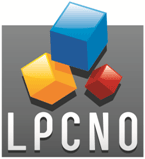FE-BASED NANORODS FOR THE FABRICATION OF « GREEN » MAGNETS
CHEMISTRY & GREEN CHEMISTRY

Lab: LPCNO
Duration: NanoX master Internship (8 months part-time in-lab immersion)
Latest starting date: 02/01/2025
Localisation: Lab name LPCNO
Postal address Bat.27. 135 avenue de Rangueil.
31077 Toulouse - FRANCE
Supervisors:
Lise-Marie LACROIX lmlacroi@insa-toulouse.fr
Guillaume VIAU gviau@insa-toulouse.fr
This research master's degree project could be followed by a PhD
Work package:
Magnetic materials play a major role in the current energy and societal transitions. However, the
development of sustainable yet performant materials, without critical elements such as rare-earths (RE),
remains a challenge [1,2]. This 6-month internship, which will be followed by a thesis, is part of a large-
scale project involving 5 laboratories with complementary expertise in chemistry, physics, chemical
engineering, artificial intelligence and data science, to develop iron-based nanorods (NRs) with optimized
magnetic properties. The real scientific challenge consists in breaking the symmetry of the Fe crystalline
structure while keeping an optimized aspect ratio, the growth of anisotropic particles requires the
symmetry breaking of iron's crystalline structure. Such control will allow achieving magnet-like properties
in assemblies. The LPCNO has been working for almost 10 years on the development of rare-earth-free magnets
using a directed assembly approach of elementary building blocks (Fig 1a). To date, this work has been
carried out on Co nanorods (NRs), synthesized by seeded growth (Fig 1b), and has led to high-performance
integrated magnets [3,4]. The aim of this internship will be to transpose the seeded growth method on
Fe NRs, the challenge relying on the need of breaking the symetry the crystal structure of Fe exhibit. An
exploration of the range of parameters (nature of seeds, growth conditions, ligand concentration) will be
undertaken during this internship. The particles obtained will be characterized by electron microscopy
(TEM and SEM), diffraction (XRD) and X-ray scattering (SAXS, WAXS) and magnetometry (VSM), in close
partnership with the other laboratories in the consortium.

References:
[1] Silveyra, J. M. et al. Soft Magnetic Materials for a Sustainable and Electrified World. Science 2018, 362, eaao0195. [2] Gutfleisch, O.et al.
Magnetic Materials and Devices for the 21st Century: Stronger, Lighter, and More Energy Efficient. Adv. Mater. 2011, 23, 821. [3] Ramamoorthy,
R. K. et al. One-Pot Seed-Mediated Growth of Co Nanoparticles by the Polyol Process: Unraveling the Heterogeneous Nucleation. Nano Lett.
2019, 19, 9160. [4] Moritz, P.et al.. « Procédé de Fabrication d’un Aimant Permanent Ou Doux ». PCT/FR2019/053046.
Areas of expertise:
Chemical synthesis, X-Ray diffraction, Transmission Electron Microscopy
Required skills for the internship:
Chemistry, Physics, Nanotechnologies or Materials Sciences. Curiosity and
scientific rigor. Communication and writing skills
